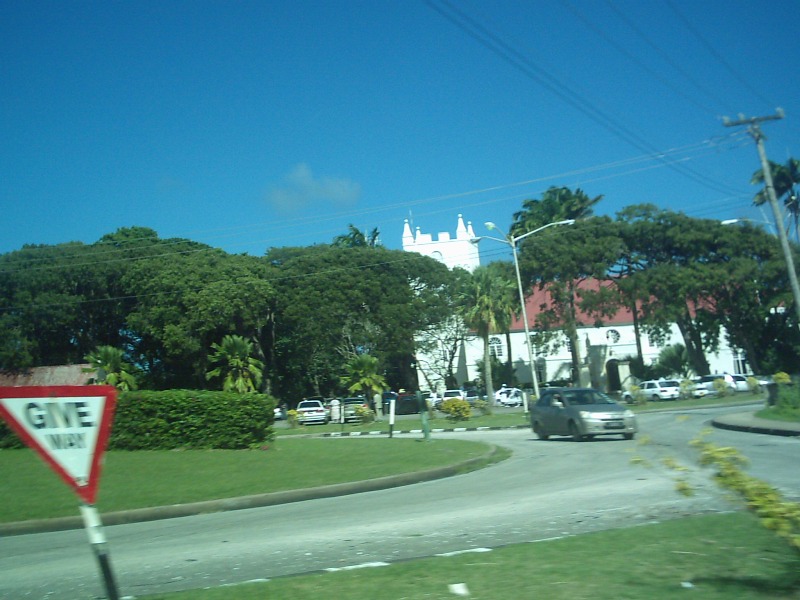On my initial visit to North Island, New Zealand I was overwhelmed in an awesome way with the luxuriant bush all around. The beauty of the mountain ranges kept my ever roving eyes spell-bound. The gorgeous trees of enormous height, straighter than any arrow caught my attention. Obviously, if only to me, my geography lessons from high-school days about mountains, rivers, and the rainforest flooded my memory. My brain was on a forward drive up-dating with what I was experiencing as I drove from Auckland to Whangarei.
On all sides the traffic flowed. Trucks loaded with fresh kumara. I love kumara. Why of course, I always love sweet potato which in Maori means kumara. I was told that before European arrival in New Zealand, carbohydrates were hard to find. Maori placed great value on the kumara, a sweet potato they had brought from Polynesia. The remains of their early gardens and storage pits can still be seen around the country. Minutes after the bin-truck passed with loads of kumara an eighteen wheeler loaded with logs passed by; and boy oh boy what a racket it

Link
made. Quite naturally my queries focused on the logs on the truck that passed us by. We talked about the native trees in New Zealand. However, inquisitively I asked from what trees do you supposed those logs were cut? Most probably from the pinus radiata. The pinus radiata is the most common pine found in New Zealand. Why is that came my next question. This somewhat simple question spurred on a more detail account of the coniferous trees that grow in North Island, New Zealand.
I learned from this conversation that North Island contains significant areas of New Zealand's exotic forest, mainly of the pinus radiata. Other pines such as the pinus nigra, pinus ponderosa, pinus contorta, pseudotsuga menziesii (Douglas fir), larix decidua are found as well. Mention was made of other pines of lesser importance of which five types were mentioned. Somehow I remembered one of them, the picea from the family of spruces. The pinus radiata growing in New Zealand produces abundant seed, and seedlings. These seedlings are easy to raise, transplanting of them is easy and they grow rapidly were reasons cited for why the pinus radiata is chief among Kiwi pine plantations.
I was fascinated and still is, by the coniferous trees that grown in North Island, New Zealand. Quite rightly so, having lived the greater part of my years on a little coral island, as flat as a pancake in the tropical zone of the Lesser Antilles in the Caribbean Diaspora . Can you imagine a pine tree with six names. If I had six names I would be considered a nut , lol. Well this pine tree is called a monterey pine, insignis pine, radiata pine, cambria pine, guadalupe island pine, cedros island pine. I guessed tree scientist stopped this nonsense and christened it with the name pinus radiata, lol. Kiwis have retained two names for it, pinus radiata and monterey pine. Kiwis in North Island prefer the name pinus radiata. Kiwis in South Island refer to it as the monterey pine.
The monterey pine wood is light, soft and coarse. In the USA it is used for firewood. In other parts of the world it is used for general construction, flooring, furniture, joinery, plywood, reconstituted panel products and paper. When treated with preservatives it can be used for siding, decking, external trim, poles, fencing and railroad ties, just to mention a few.
There are many reasons why in New Zealand, the trees are protected with a vengeance. I read in a leading Kiwi newspaper about a Chinese who was fined $5 000 for cutting down a pohutukawa tree to make way for his driveway without the necessary Council's approval. In addition to the fine he had to replant a new potukawa tree in its space. Trees of all kinds and especially native trees are given great respect in New Zealand. My favourite native trees are the Kauri and Pohutukawa for they tell great stories.
No, no, not at all. The notion of Bobbittised insinuation never popped into my mind when I penned the Sapphic tree poem, "Pinus Under Attack Not Really" with Adonics rhyming abbc. My mind was zeroed in on trees, forestry and environmental issues New Zealanders grapple with daily. Sub-consciously perhaps my mind locked on to my using the Sapphic verse with Adonics for the poem. However, the real motivation came from a photo posted by Robb Kloss, an environment enthusiast. His spiritual place is the Ruahine Ranges in New Zealand.
The Sapphic structure of the poem celebrates the artistry of the Greek lyric poet, Sappho whose birthplace was on the island of Lesbos. This type of poem is structured with lines of eleven syllables in five feet. The arrangement for the five feet in the verses is shown below.
The first, fourth and fifth are trochees (/V)
The third a spondee (//)
The second a dactyl (/VV)
The sapphic strophe consists of three Sapphic verses followed by an Adonic.
The strophe in modern poetry is a stanza or rhythmic system made p of two or more verses arranged as a unit.
Adonic refers to a verse consisting of a dactyl (/VV) followed by a spondee (//) or trochee (/V). It is believed to be named because of its use in songs during the Adonia. The Adonia was an ancient festival in honour of Adonis. "Pinus Attack Not Really" is my first attempt at writing a sapphic poem with Adonics. Click on the title to read the poem. Please post your comments.

No comments:
Post a Comment